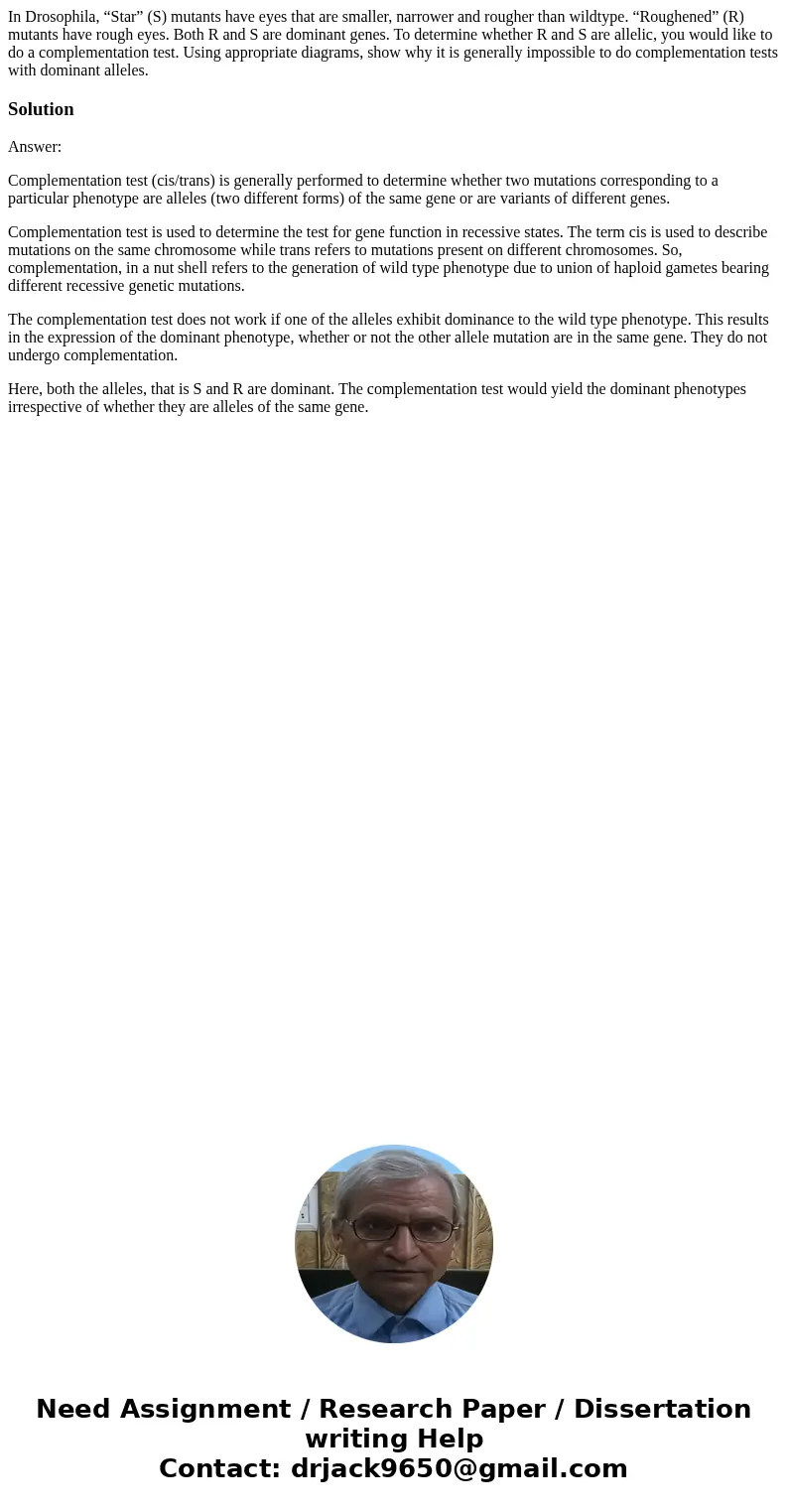In Drosophila Star S mutants have eyes that are smaller narr
In Drosophila, “Star” (S) mutants have eyes that are smaller, narrower and rougher than wildtype. “Roughened” (R) mutants have rough eyes. Both R and S are dominant genes. To determine whether R and S are allelic, you would like to do a complementation test. Using appropriate diagrams, show why it is generally impossible to do complementation tests with dominant alleles.
Solution
Answer:
Complementation test (cis/trans) is generally performed to determine whether two mutations corresponding to a particular phenotype are alleles (two different forms) of the same gene or are variants of different genes.
Complementation test is used to determine the test for gene function in recessive states. The term cis is used to describe mutations on the same chromosome while trans refers to mutations present on different chromosomes. So, complementation, in a nut shell refers to the generation of wild type phenotype due to union of haploid gametes bearing different recessive genetic mutations.
The complementation test does not work if one of the alleles exhibit dominance to the wild type phenotype. This results in the expression of the dominant phenotype, whether or not the other allele mutation are in the same gene. They do not undergo complementation.
Here, both the alleles, that is S and R are dominant. The complementation test would yield the dominant phenotypes irrespective of whether they are alleles of the same gene.

 Homework Sourse
Homework Sourse